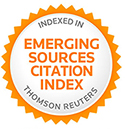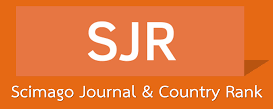Aportes para la contextualización y relevancia internacional del Geopatrimonio del Geoparque Mundial UNESCO Mixteca Alta, México
Resumen
El geopatrimonio de un territorio reúne los rasgos geológicos y geomorfológicos clave para interpretar la historia del planeta. Su singularidad confiere su valor internacional, aspecto fundamental para la instauración de un Geoparque Mundial UNESCO. Este artículo expone el caso del Geoparque Mundial UNESCO Mixteca Alta (México), contextualizando sus principales aspectos de importancia mundial. Se resalta la presencia de afloramientos metamórficos del proterozoico, evidencias paleoecológicas de los pastizales de Norteamérica, presencia de fósiles guías del Albiense y estructuras tectónicas y neotectónicas en los terrenos tectonoestratigráficos Mixteco y Zapoteco; también elementos culturales de categoría internacional. Se destaca la importancia de estos sitios a escala nacional, cumpliendo con el criterio de singularidad, establecido por la Unión Internacional de Ciencias Geológicas. Para cumplimentar los objetivos de los Geoparques Mundiales UNESCO, se resalta la participación comunitaria, el grado de interacción de la sociedad con su geopatrimonio, así como la divulgación de estos elementos de interés.
Recibido: enero, 2025/ Aceptado: abril, 2025
Palabras clave
Texto completo:
PDFReferencias
AGENBROAD, L.D. 1984. “New World mammoth distribution”. En: P. S. MARTIN & R.G. KLEIN (Eds.), Quaternary Extinctions, a prehistoric revolution, pp. 90-108. University of Arizona. Tucson, USA.
ALBA, S.; BALDO, M.; DE BENEDETTI, L.; DEIMICHEI, S.; MAZZINO, F.; MARGAGLIOTTI, A.;… & I. TOCCO TUSSARDI. 2023. “A participatory inventory project to Kick-Start the creation of a Hospital Park: The experience of the University of Verona (North-Eastern Italy)”. Sustainability, 15(5): 3905. Disponible en: https://doi.org/10.3390/su15053905.
ALENCASTER, G. y J. PANTOJA. 1986. “Coalcomana ramosa (Bohm) (Bivalvia-Hippuritacea) del Albiano temprano del cerro Tuxpan, Jalisco”. Boletín de la Sociedad Geológica Mexicana, 47(1): 33-46.
BARRIENTOS-ZAVALA, K.J.; CHAKO-TCHAMABÉ, B.; SILIS-ESQUIVEL, J.; ALCALÁ-REYGOSA, J.; FERNÁNDEZ DE CASTRO MARTÍNEZ, G.; MARÍN-GUZMÁN, A. P. & A. MONTES DE OCA. 2023. “Distribution and Characterization of the Mixteca Alta-UNESCO Geopark Dikes as Evidence of an Extensional Tectonic Regime in Western Oaxaca, Mexico”. Investigaciones geográficas, 111. Disponible en: https://doi.org/10.14350/rig.60696.
BAUTISTA SANTIAGO, N.A. 2022. “Paisajes mediáticos de la Mixteca oaxaqueña: imágenes para un futuro étnico”. Cuicuilco. Revista de Ciencias Antropológicas, 29(85): 137-163.
BOCCO, G.; CASTILLO, B. S.; OROZCO-RAMÍREZ, Q. y A. ORTEGA-ITURRIAGA. 2019. “La agricultura en terrazas en la adaptación a la variabilidad climática en la Mixteca Alta, Oaxaca, México”. Journal of Latin American Geography, 18(1): 141-168.
BRILHA, J. 2018. “Geoheritage and geoparks”. En: E. REYNARD y J. BRILHA (Eds.), Geoheritage. Assessment, Protection, and Management. pp. 323-334. Elsevier.
CABALLERO CRUZ, P.; HERRERA MUÑOZ, G.; BARRIOZABAL ISLAS, C. y M. T. PULIDO. 2016. “Conservación basada en comunidad: importancia y perspectivas para Latinoamérica”. Estudios sociales (Hermosillo, Son.), 26(48): 335-352.
CARBOT-CHANONA, G.; GÓMEZ-PÉREZ, L. E. & M. A. COUTIÑO-JOSÉ. 2022. “A new specimen of Eremotherium laurillardi (Xenarthra, Megatheriidae) from the Late Pleistocene of Chiapas, and comments about the distribution of the species in Mexico”. Boletín de la Sociedad Geológica Mexicana, 74(2): A070322. Disponible en: http://dx.doi.org/10.18268/ BSGM2022v74n2a070322.
CARCAVILLA, L.; DÍAZ-MARTÍNEZ, E.; GARCÍA-CORTÉS, A. & J. VEGAS. 2019. “Geoheritage and geodiversity”. Instituto Geológico y Minero de España.
CEBALLOS, G.; ARROYO-CABRALES, J. & E. PONCE. 2010. “Effects of Pleistocene environmental changes on the distribution and community structure of the mammalian fauna of Mexico”. Quaternary Research, 73: 464-473. Disponible en: https://doi.org/10.1016/j.yqres.2010.02.006.
CENTENO-GARCÍA, E. 2017. “Mesozoic tectono-magmatic evolution of Mexico: An overview”. Ore Geology Reviews, 81: 1.035-1.052. Disponible en: http://dx.doi.org/10.1016/j.oregeorev.2016.10.010.
DU, Y. & Y. GIRAULT. 2018. “A genealogy of UNESCO Global Geopark: Emergence and evolution”. International Journal of Geoheritage and Parks, 6(2): 1-17. Disponible en: 10.17149/ijgp.j.issn.2577.4441.2018.02.001.
FARSANI, N. T.; COELHO, C. O. A.; COSTA, C. M. M. & A. AMRIKAZEMI. 2014. “Geo-knowledge management and geoconservation via Geoparks and Geotourism”. Geoheritage, 6: 185-192. Disponible en: https://doirg.pbidi.unam.mx:2443/10.1007/s12371-014-0099-7.
FERNÁNDEZ DE CASTRO-MARTÍNEZ, G. 2020. Fotogrametría digital y modelado del terreno por erosión hídrica en la cuenca alta del río Verde, Oaxaca. Universidad Nacional Autónoma de México (UNAM). Tesis Doctoral. GABRIEL, R.;
MOREIRA, H.; ALENCOÃO, A.; FARIA, A.; SILVA, E. & A. A. SÁ. 2018. “An emerging paradigm for the UNESCO Global Geoparks: The Ecosystem’s Health Provision”. Geosciences, 8, 100. Disponible en: doi:10.3390/geosciences8030100.
GEORGOUSIS, E.; SAVELIDI, M.; SAVELIDES, S.; HOLOKOLOS, M.V. & H. DRINIA. 2021. “Teaching Geoheritage values: Implementation and thematic analysis evaluation of a synchronous Online Educational Approach”. Heritage, 4(4): 3.523-3.542. Disponible en: https://doi.org/10.3390/heritage4040195.
GIRAULT, Y. 2019. “Methodological proposal for the valorization of the geodiversity of rural areas comparable with the Zat Valley”. En Y. GIRAULT (Ed.), UNESCO Global Geoparks: Tension Between Territorial Development and Heritage Enhancement, pp., 111-132. ISTE Ltd and John Wiley & Sons, Inc.
GONZÁLEZ HUIZAR, H. 2019. “La Olimpiada XXIV de Ciencias de la Tierra: Los Grandes Terremotos en México”. GEOS, 39(1): 1-21.
GORDON, J. E. 2019. “Geoconservation principles and protected area management”. International Journal of Geoheritage and Parks, 7(4): 199-210. Disponible en: https://doi.org/10.1016/j.ijgeop.2019.12.005.
GRAY, M. 2013. Geodiversity: Valuing and conserving abiotic nature (2nd. ed.). Wiley Blackwell, Chichester, UK.
GUERRERO-ARENAS, R.; JIMÉNEZ, H. E., y R. E. SANTIAGO. 2010. “La transformación de los ecosistemas de la Mixteca Alta oaxaqueña desde el Pleistoceno Tardío hasta el Holoceno”. Ciencia y Mar, 14: 61-68.
HENRIQUES, M. H. & J. BRILHA. 2017. “UNESCO Global Geoparks: a strategy towards global understanding and sustainability”. Episodes, 40(4): 349-355. Disponible en: http://dx.doi.org/10.18814/epiiugs/2017/v40i4/017036.
HOFFMAN, P. F. 1991. “Did the breakout of Laurentia turn Gondwanaland inside out?” Science, 252: 1.409-1.412.
INTERNATIOINAL UNION OF GEOLOGICAL SCIENCE (IUGS). 2023. Guidelines for the assessment of the international significance of geological heritage in UNESCO Global Geoparks applications. Disponible en: https://unesdoc.unesco.org/ark:/48223/pf0000386952.
JOHNSON, E.; NIELSEN-MARSH, C. M. & M. A. GUTIERREZ. 2008. “Exploration of diagenetic profiles at mammoth localities on the North American grasslands”. N. Jb. Geol. Paläont. Abh., 250: 113-127.
KOSTOGLODOV, V. y J. F. PACHECO. 1999. Cien años de sismicidad en México. Instituto de Geofísica, Universidad Nacional Autónoma de México. Disponible en: https://usuarios.geofisica.unam.mx/vladimir/sismos/100a%F1os.html. [Consulta: marzo, 2024].
LAHEE, F.H. 1985. Geología Práctica. Ed. Omega. Barcelona, España.
LEIGH, D. S.; KOWALEWSKI, S. A. & G. HOLDRIDGE. 2013. “3400 years of agricultural engineering in Mesoamerica: lama-bordos of the Mixteca Alta, Oaxaca, Mexico”. Journal of Archaeological Science, 40(11): 4.107-4.111.
LORENZEN, M. 2021. “Nueva ruralidad y migración en la Mixteca Alta, México”. Perfiles latinoamericanos, 29(58): 00011. Disponible en: https://doi.org/10.18504/pl2958-011-2021.
LUCAS, S. G.; ROMERO, J. E.; VÁSQUEZ, O. J. & G. E. ALVARADO. 2022. “The fossil vertebrates of Guatemala”. Revista Geológica de América Central, 66: 1-32. Disponible en: DOI: 10.15517/rgac.v66i0.48590.
LUGO HUBP, J. 1988. Elementos de geomorfología aplicada (métodos cartográficos). Universidad Nacional Autónoma de México (UNAM). México.
MARTINI, G.; ZOUROS, N.; ZHANG, J.; JIN, X.; KOMOO, I.; BORDER, M.; … & A. A. SÁ. 2022. “UNESCO Global Geoparks in the “World after”: a multiple-goals roadmap proposal for future discussion”. Episodes Journal of International Geoscience, 45(1): 29-35. Disponible en: https://doi.org/10.18814/epiiugs/2021/021002.
MARTORELL, C.; GARCÍA, D.; BEJARANO, O.; PÉREZ, S. y J. ULRICH. 2022. Los pastizales Chocholtecos: Capítulo 1. Disponible en: https://www.facebook.com/watch/?v=687583152313834. [Consulta: marzo, 2024].
MENDOZA, E. 2002. “El ganado comunal en la Mixteca Alta: de la época colonial al siglo XX. El caso de Tepelmeme”. Historia Mexicana, 51: 749-785.
MITCHELL, S. F. (Ed). 2011. The Ninth International Congress on Rudist Bivalves, 18th to 25th June 2011, Abstracts, Articles and Field Guides. The Ninth International Congress on Rudist Bivalves. Disponible en: https://tedbusinesspro.com/sfmgeology/pdfs/.
MIXTECA ALTA ASPIRING GEOPARK. 2015. Application dossier for the Global Geopark Network. Oaxaca, México.
MORA, C. I.; VALLEY, J. W. & F. ORTEGA-GUTIÉRREZ. 2019. “The temperature and pressure conditions of Grenville-age granulite facies metamorphism of the Oaxacan Complex, southern Mexico”. Revista Mexicana de Ciencias Geológicas, 6(2): 222-242.
MUELLER, R. G.; JOYCE, A. A. & A. BOREJSZA. 2012. “Alluvial archives of the Nochixtlan valley, Oaxaca, Mexico: Age and significance for reconstructions of environmental change”. Palaeogeography, Palaeoclimatology, Palaeoecology, 321/322: 121-136. Disponible en: https://doi.org/10.1016/j.palaeo.2012.01.025.
NEWSOME, D. & R. DOWLING. 2018. “Geoheritage and geotourism”. En: E. REYNARD & J. BRILHA (Eds.), Geoheritage. Assessment, Protection, and Management, pp. 305-321. Elsevier.
OROZCO-RAMÍREZ, Q.; BOCCO, G. & B. SOLÍS-CASTILLO. 2020. “Cajete maize in the Mixteca Alta region of Oaxaca, Mexico: adaptation, transformation, and permanence”. Agroecology and Sustainable Food Systems, 44(9): 1.162-1.184.
ORTEGA-GUTIÉRREZ, F. 1984. “Evidence of Precambrian evaporites in the Oaxacan granulite complex of southern Mexico”. Precambrian Research, 23: 377-393.
ORTEGA-GUTIÉRREZ, F.; RUIZ, J. & E. CENTENO-GARCÍA. 1995. Oaxaquia, a Proterozoic microcontinent accreted to North America during the late Paleozoic. Geology, 23(12): 1.127-1.130.
ORTEGA-GUTIÉRREZ, F.; ELÍAS-HERRERA, M.; MORÁN-ZENTENO, D. J.; SOLARI, L.; WEBER, B. & L. LUNA-GONZÁLEZ. 2018. “The pre-Mesozoic metamorphic basement of Mexico, 1.5 billion years of crustal evolution”. Earth-Sciences Reviews, 183: 2-37. Disponible en: https://doi.org/10.1016/j.earscirev.2018.03.006.
OVIEDO-GARCÍA, A. 2005. Rudistas del Cretácico Superior del Centro Al Sureste de México (Recuento sistemático de rudistas americanos). Universidad Autónoma de Barcelona. Unidad de Paleontología del Departamento de Geología. Tesis Doctoral. Disponible en: https://app.ingemmet.gob.pe/biblioteca/pdf/Paleo-3.pdf.
PALACIO-PRIETO, J. L. 2013. “Geositios, geomorfositios y geoparques: importancia, situación actual y perspectivas en México”. Investigaciones geográficas, 82: 24-37.
PALACIO-PRIETO, J. L.; ROSADO-GONZÁLEZ, E.; RAMÍREZ-MIGUEL, X.; OROPEZA-OROZCO, O.; CRAM-HEYDRICH, S.; ORTIZ-PÉREZ, M. A.; … & G. FERNÁNDEZ DE CASTRO-MARTÍNEZ. 2016. “Erosion, culture and geoheritage; the case of Santo Domingo Yanhuitlán, Oaxaca, México”. Geoheritage, 8: 359-369. Disponible en: https://doi.org/10.1007/s12371-016-0175-2.
PALACIO-PRIETO, J. L.; FERNÁNDEZ DE CASTRO MARTÍNEZ, G. y E. R. ROSADO GONZÁLEZ. 2019. “Geosenderos en el Geoparque Mundial UNESCO Mixteca Alta, Oaxaca, México”. Cuadernos Geográficos, 58(2): 111-125. Disponible en: DOI: http://dx.doi.org/10.30827/cuadgeo.v58i2.7055.
PANIZZA, M. 2001. “Geomorphosites: concepts, methods and examples of geomorphological survey”. Chinese Science Bulletin, 46: 4-5.
PÉREZ RODRÍGUEZ, V. 2016. “Terrace agriculture in the Mixteca Alta Region, Oaxaca, Mexico: ethnographic and archeological insights on terrace construction and labor organization”. Culture, Agriculture, Food and Environment, 38(1): 18-27.
PÉREZ RODRÍGUEZ, V. 2020. “Estudio etnoarqueológico de la alfarería en Santo Domingo Tonaltepec, Oaxaca”. Cuadernos del Sur, 25(48): 6-28.
PLUMMER, P. S. 2024. “Evolution and extinction in a supercontinental world: did the breakup of Rodinia provide metazoans with evolutionary salvation?” Australian Journal of Earth Sciences, 1-11. Disponible en: https://doi.org/10.1080/08120099.2024.2364710.
PROGEO. 2017. Geodiversidad, Patrimonio Geológico y Geoconservación. La guía de ProGEO. Disponible en: http://www.progeo.ngo/downloads/ProGEO_leaflet_ES_2017.pdf.
PROSSER, C. D. 2019. “Communities, Quarries and Geoheritage-Making the Connections”. Geoheritage, 11: 1.277-1.289. Disponible en: https://doi.org/10.1007/s12371-019-00355-4.
REYNARD, E. & J. BRILHA. 2018. “Geoheritage: A multidisciplinary and applied research topic”. En: E. REYNARD & J. BRILHA (Eds), Geoheritage. Assessment, Protection, and Management. pp. 3-9. Elsevier.
RÍO DE LA LOZA, L. 1865. Descripción del aerolito de Yanhuitlán. Imprenta de J. M. Andrade y F. Escalante. Disponible en: https://memoricamexico.gob.mx/swb/memorica/Cedula?oId=Kd07-W8B1i1oLPn4We5e.
RODRIGUES, J.; COSTA E SILVA, E. & D. I. PEREIRA. 2023. “How can geoscience communication foster public engagement with geoconservation?” Geoheritage, 15(32). Disponible en: https://doi.org/10.1007/s12371-023-00800-5.
ROSADO-GONZÁLEZ, E. M. 2016. El Geoparque Mixteca Alta, Oaxaca; propuesta de incorporación a los Geoparques Globales de la UNESCO. Universidad Nacional Autónoma de México. Tesis Licenciatura.
ROSADO-GONZÁLEZ, E. M. y X. RAMÍREZ-MIGUEL. 2017. “Importancia del trabajo comunitario participativo para el establecimiento del Geoparque Mundial de la UNESCO Mixteca Alta, Oaxaca, México”. Investigaciones Geográficas, 92. Disponible en: https://doi.org/10.14350/rig.59435.
ROSADO-GONZÁLEZ, E. M.; SÁ, A. & J. L. PALACIO-PRIETO. 2020. “UNESCO Global Geoparks in Latin America and the Caribbean and their contribution to Agenda 2030 Sustainable Development Goals”. Geoheritage, 13(21). Disponible en: https://doi.org/10.1007/s12371-020-00459-2.
ROSADO-GONZÁLEZ, E. M.; FERRARO CASTILLO, F. X.; PALACIO-PRIETO, J. L. y A. A. SÁ. 2022. “La Investigación-Acción Participativa como estrategia clave en la consolidación y gestión de los Geoparques Mundiales de la UNESCO: los casos del Mixteca Alta Geoparque Mundial de la UNESCO (México) y del Minero Litoral del Biobío Geoparque Aspirante (Chile)”. Museologia e Patrimônio - Revista Eletrônica do Programa de Pós-Graduação em Museologia e Patrimônio – UNIRIO, 15(1): 150-163.
RUIZ, J.; PATCHETT, P. J. & F. ORTEGA-GUTIERREZ. 1988. “Proterozoic and Phanerozoic basement terranes of Mexico from Nd isotopic studies”. Geological Society of America Bulletin, 100: 274-281.
SÁ, A. A.; ROSADO-GONZALEZ, E.; VAZ, N.; LOURENÇO, J.; SILVA, E. y MARTÍNEZ-MARTÍN, J. E. 2024. “A comunicação e a educação como pilares do desenvolvimento sustentável em Geoparques Mundiais da UNESCO”. En: F. F. L. LUBECK FILHO, y L. CARVALHO (Orgs), Comunicação & Desenvolvimento. pp. 27-37.
FACOS-UFSM. SANDOVAL-GARCÍA, R.; GONZÁLEZ-CUBAS, R. & J. JIMÉNEZ-PÉREZ. 2021. “Multitemporal analysis of the change in land cover in the Mixteca Alta Oaxaqueña”. Revista mexicana de ciencias forestales. Disponible en: DOI: 10.29298/rmcf.v12i66.816.
SANTAMARÍA-DÍAZ, A.; ALANIZ-ÁLVAREZ, S. A. & A. F. NIETO-SAMANIEGO. 2008. “Deformaciones cenozoicas en la cobertura de la falla Caltepec en la región de Tamazulapam, sur de México”. Revista Mexicana de Ciencias Geológicas, 25 (3): 494-516.
SANTANGELO, N. & E. VALENTE. 2020. “Geoheritage and Geotourism Resources”. Resources, 9(80): 1-5. Disponible en: DOI:10.3390/resources9070080.
SEDLOCK, R. L.; ORTEGA-GUTIÉRREZ, F. & R. C. SPEED. 1993. “Tectonostratigraphic terranes and tectonic evolution of Mexico: Boulder”. Geological Society of America, Special Paper, 278: 153.
SERVICIO SISMOLÓGICO NACIONAL. 2024. Catálogo de sismos. Disponible en: http://www2.ssn.unam.mx:8080/catalogo/. [Consulta: marzo, 2024].
SOLIS, B. & G. BOCCO. 2018. “Terraces and landscape in Mixteca Alta, Oaxaca, Mexico: Micromorphological indicators”. Spanish Journal of Soil Science, 8(2): 194-213. Disponible en: DOI: 10.3232/SJSS.2018.V8.N2.05.
SPORES, R. 1969. “Settlement, farming technology, and environment in the Nochixtlan Valley”. Science, 166(3905): 557-569.
SPORES, R. & A. BALKANSKY. 2013. The Mixtecs of Oaxaca. Ancient times to the present (The Civilization of the American Indian Series, volume 267). University of Oklahoma Press. Norman, Publishing Division of the University. USA.
UNESCO. 2024. UNESCO Global Geoparks. Disponible en: https://www.unesco.org/en/iggp/geoparks/about?hub=67817. [Consulta: agosto, 2024].
UNESCO. 2015. Statutes of the International Geoscience and Geoparks Programme and Operational Guidelines for
UNESCO Global Geoparks. Disponible en: https://unesdoc.unesco.org/ark:/48223/pf0000234539.
WEBER, B. & C. H. SCHULZE, C.H. 2014. “Early Mesoproterozoic (> 1.4 Ga) ages from granulite basement inliers of SE Mexico and their implications on the Oaxaquia concept –evidence from U-Pb and Lu-Hf isotopes on zircon”. Revista Mexicana de Ciencias Geológicas, 31(3): 377-394.
WIMBLEDON, W. A. 1996. “GEOSITES-a new conservation initiative”. Episodes, 19(3): 87-88. Disponible en: https://doi.org/10.18814/epiiugs/1996/v19i3/009.
XU, K. & W. WU. 2022. “Geoparks and geotourism in China: A sustainable approach to Geoheritage conservation and local development—A review”. Land, 11(9): 1.493. Disponible en: https://doi.org/10.3390/land11091493.
ZHAO, X. & M. WANG. 2002. “National geoparks initiated in China: Putting geoscience in the service of society”. Episodes, 25: 33-37.
ZOUROS, N. 2016. “Global Geoparks Network and the New UNESCO Global Geoparks Programme”. Bulletin of the Geological Society of Greece, 50: 284-291.
Enlaces refback
- No hay ningún enlace refback.
DOI: https://doi.org/10.53766/RGV
La Revista Geográfica Venezolana se encuentra actualmente indizada en:
 |  |  | |
 |  |  |  |
 |  |  |  |
![]()
Todos los documentos publicados en esta revista se distribuyen bajo una
Licencia Creative Commons Atribución -No Comercial- Compartir Igual 4.0 Internacional.
Por lo que el envío, procesamiento y publicación de artículos en la revista es totalmente gratuito.

